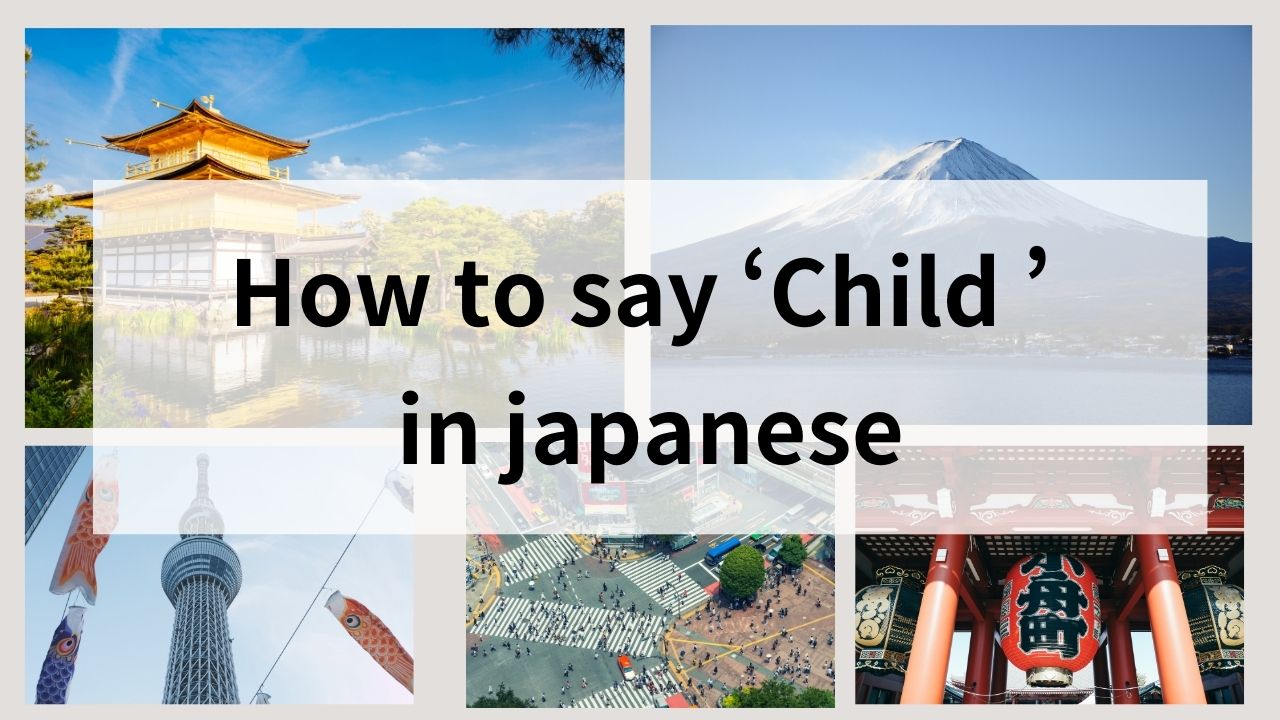Are you curious about how to say “child” in Japanese? The concept of a child encompasses a variety of meanings and cultural nuances in Japan, reflecting societal values and traditions. This guide will explore the Japanese word for “child,” its cultural significance, and practical applications.
How Do You Say “Child” in Japanese?
The Japanese word for “child” is 子供 (kodomo). This term is widely recognized and used in both casual and formal contexts. The concept of a child in Japan is deeply intertwined with family values, education, and societal expectations.
The Japanese Word for Child: Kodomo (子供)
“Kodomo” is used to describe children and appears in various phrases and contexts. For example:
- 子供たち (Kodomo-tachi): “Children” (plural).
- 子供の教育 (Kodomo no kyouiku): “Education of children.”
- 子供向け (Kodomo muke): “For children” (child-friendly).
Kanji for Child: 子供
The kanji for child, 子 and 供, is often used in literature, traditional contexts, and everyday language. The character 子 (ko) refers to “child,” while 供 (domo) conveys a sense of companionship or association. Together, they capture the essence of childhood.
Examples of words containing the kanji 子供 include:
- 子供の遊び (Kodomo no asobi): “Children’s play.”
- 子供服 (Kodomo fuku): “Children’s clothing.”
- 幼児 (Youji): “Infant” or “toddler,” referring to very young children.
This kanji combination highlights the importance of children in Japanese culture, often associated with innocence, joy, and the future. Recognizing these patterns can help learners understand the nuanced use of 子供 in Japanese.
Does “Child” Work in Japanese?
The English word “child” is generally understood in Japan, particularly among younger generations or those familiar with English. However, its recognition might be less universal among older individuals or in more traditional contexts. A 5-point scale rates its comprehension as:
- Rating: 4 – Generally understood (60-80% of people)
If clarity is crucial, using the Japanese term 子供 (Kodomo) is recommended. While “child” may be understood in certain contexts, “kodomo” ensures effective communication.
The Cultural Significance of Children in Japan
Children hold a special place in Japanese culture, symbolizing hope, family, and the future. The Japanese society places high importance on education and upbringing, which is reflected in the language and practices surrounding children.
Children as Symbols of Hope
In Japan, children are often seen as the bearers of the future. This belief is deeply embedded in cultural values that prioritize nurturing and educating the younger generation.
Children in Japanese Folklore and Festivals
Children frequently appear in Japanese myths and festivals, symbolizing innocence and the purity of spirit. Festivals such as こどもの日 (Kodomo no Hi), or Children’s Day, celebrate the well-being and happiness of children, reflecting their importance in society.
Furthermore, children are often depicted in traditional tales, such as 桃太郎 (Momotarō), where they are portrayed as heroes with strong moral values.
Differences Between Children in Japan and Overseas
There can be subtle differences in how the concept of “child” is perceived in Japan versus Western cultures. In Japan, the emphasis on group harmony and collective responsibility often shapes the upbringing of children, whereas Western cultures may emphasize individualism and self-expression. Understanding these cultural nuances can help in discussions about child-rearing practices and educational philosophies.
Practical Applications of “Child” in Japanese
Learning how “child” is used in Japanese can help you navigate conversations, understand idioms, and recognize its presence in Japanese culture.
Talking About Children in Daily Conversation
Here are some examples of how “kodomo” is used in everyday conversation:
- 子供が好きです (Kodomo ga suki desu): “I like children.”
- 子供の遊び場 (Kodomo no asobiba): “Children’s playground.”
Child-Related Idioms or Expressions
While there are relatively few specific idioms directly involving “kodomo,” the concept of children is often associated with joy, innocence, and the future in Japanese culture. Here are some idioms, phrases, and expressions that incorporate or symbolize children:
- 子供のように遊ぶ (Kodomo no you ni asobu): “To play like a child,” symbolizing a carefree and joyful spirit.
- 子供の笑顔 (Kodomo no egao): “Children’s smiles,” often used to convey happiness and innocence.
- 子供の未来 (Kodomo no mirai): “The future of children,” emphasizing the importance of nurturing the next generation.
- お子様ランチ (Okosama ranchi): A special children’s meal often served in restaurants, featuring colorful and appealing dishes.
- キャラクターお菓子 (Kyarakutā okashi): Character-themed snacks and candies that are popular among children, often featuring beloved anime or video game characters.
- 子供向けの絵本 (Kodomo muke no ehon): Children’s picture books that are designed to be educational and entertaining.
- Hiragana (こども, Kodomo):
Hiragana is the most commonly used script for “child” in casual writing or when teaching children. It is simple and easy to read, making it ideal for everyday use. - Katakana (コドモ, Kodomo):
Katakana is rarely used for “child,” but it may appear in stylistic contexts, such as advertisements, product names, or when emphasizing the word in text. - Kanji (子供, Kodomo):
Kanji is the most formal and traditional way to write “child.” It is often used in literature, official documents, and cultural contexts. The kanji itself conveys a sense of importance and respect.
These idioms and expressions reflect the deep cultural appreciation for children in Japan, often tied to themes of joy, innocence, and familial bonds. By learning these phrases, you can gain a deeper understanding of how children are interwoven with Japanese language and values.
Children in Japanese Cuisine or Products
Children also play a significant role in Japanese cuisine and products, showcasing their preferences and the cultural focus on family meals. Here are some notable examples:
These examples highlight how children’s preferences and interests are celebrated in Japanese cuisine and products, adding richness and joy to family life.
FAQs
Here are some frequently asked questions about children in Japanese culture and language.
Are Children Considered Important in Japan?
Yes, children are highly valued in Japan, often seen as the future of society. The culture emphasizes their education and well-being.
How Do You Write “Child” in Japanese?
The word “child” can be written in three different scripts in Japanese: hiragana, katakana, and kanji. Each script serves different purposes depending on the context and formality. Here’s a breakdown:
Choosing which script to use depends on the tone, audience, and purpose of your communication. Understanding these variations can enhance both your written and spoken Japanese skills.
Conclusion
The term “child,” or “kodomo” in Japanese, is not just a word—it embodies the values of family, education, and societal hope. By understanding its role in Japanese language and traditions, you can deepen your appreciation for the significance of children in Japanese society.








